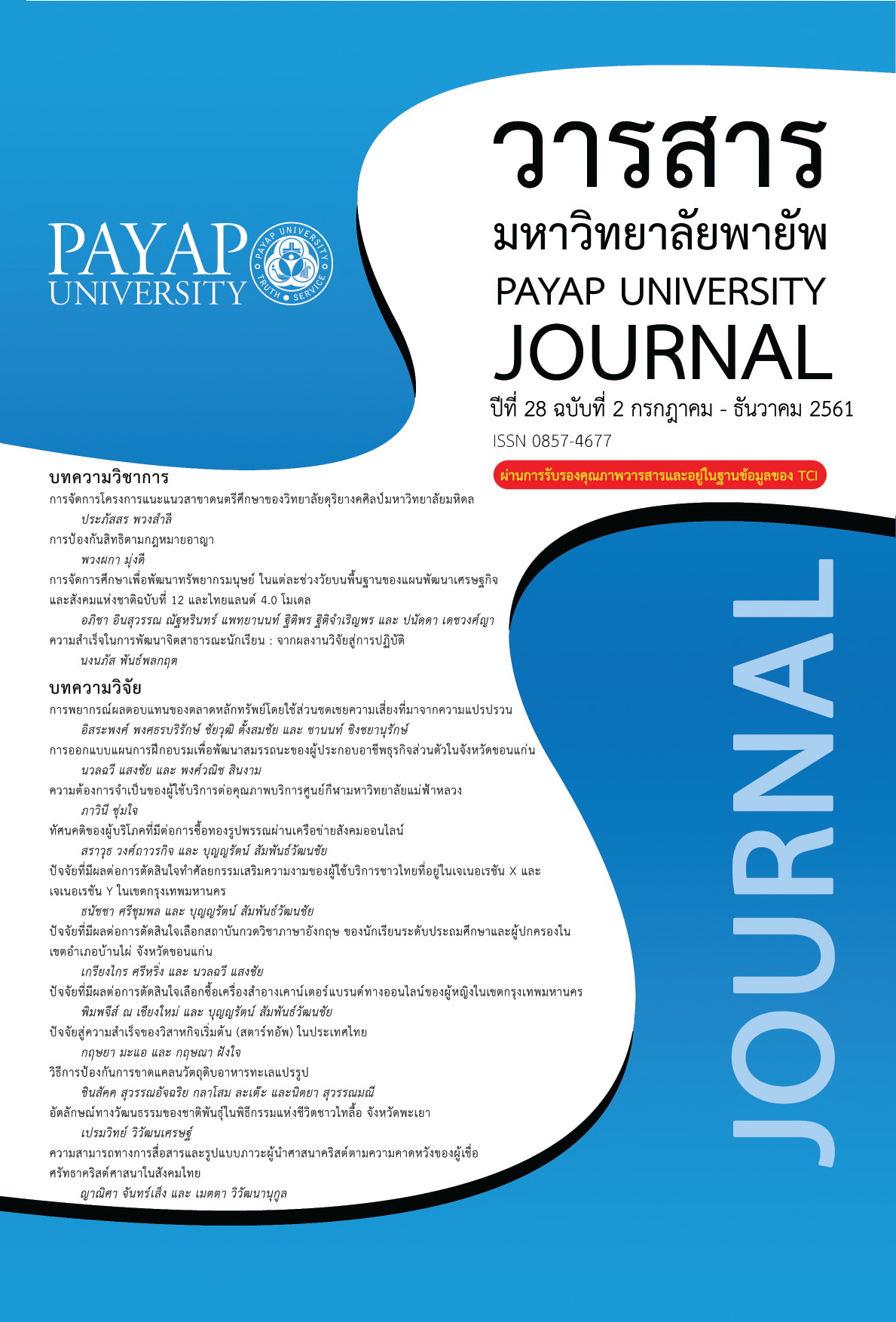Ways to Prevention the Shortage of Raw Materials for Processed Seafood Product
Main Article Content
Abstract
The purpose of this article is to study 1) Types of shortage raw materials and causes of shortage 2) Evaluate the size of purchasing logistics costs and transaction costs of manufactory in dried squid processing in the case of shortage of raw materials and 3) The ways to solve the shortage of raw material problems.
The research results showed that the study of the shortest raw materials are black and white fishes with the same amount in 3,070,000 kg per year. The second one is O-lie fish which is about 1,990,000 kg per year and squid is about 143,004 kg per year respectively. The causes of the shortage raw material are 1) Lack of own trading network and trading in long-term contracts with the sellers. 2) The government measures for organizing of catching aquatic animals to prevent and eliminate illegal fishing and for the benefit of international trade.
The way to solve the shortage problems was found that the company should do business by outsourcing to search for raw materials and long-term purchasing plan, size of purchasing logistic costs, and transaction costs of dried squid processing which depend on the type of workers. Management of each manufactory by responsibility for the daily expenses of the workers other than the daily shortage of raw materials and no network which is accessible to raw materials. In the case of dried squid production manufactories should be used natural substitute materials and the value of the product can be added for the continuous production. There are no limits to the natural environment and long-term income, such as the production of crispy snail shell, have been recognized as a new substitute for dried squid appropriately by evaluating from the experts.
Article Details
References
ชินสัคค สุวรรณอัจฉริยและคณะ. (2561). รายงานโครงการวิจัยการประกันการขาดแคลนวัตถุดิบสำหรับอุตสาหกรรมอาหารทะเลแปรรูปจังหวัดสงขลา.มหาวิทยาลัยทักษิณ.สงขลา.
ชรัญญา สุวรรณเสรีรักษ์และคณะ. (2561). ความต้องการของลูกค้าด้านส่วนประสมทางการตลาดผลิตภัณฑ์เซรามิกในเขตอำเภอเมือง จังหวัดเชียงใหม่.วารสารมหาวิทยาลัยพายัพ 28 (1): 179-193.
Afanas'ev, M. P. (2004). logic of the deficit economy M.: Izd-vo RAGS. (In Russia).
Auzan, A.A. (2005). Institutional Economics:Textbook. M.: INFRA-M. (In Russia).
Bondarenko, S. A. The main features of the command and administrative system of management. Deficit theory Retrieved June, 24, 2017, from http://www.refu.ru/refs/101/36946/1.htm (In Russia)
Coase, R. (2007). Firm, market and law. Trans. with English. - M.: New publishing house. (In Russia).
Golubkov, E P. (2001). Designing elements of the marketing complex: the formation of a product policy. Marketing in Russia and abroad. 5: 20-29. (In Russia).
Golubkov, E.P. (2009). Anti-crisis marketing. Marketing in Russia and abroad 1:5-17 (In Russia).
Kornai, J. (1990). Deficit. M.(In Russia).
Kubakhov,P. (2003). Strategies for developing new products in the food industry. University Bulletin 1:12-20 (In Russia).
Kushch,C.M.,Ovdina,M V.,and Smirnova M. M. (2008). Evaluation of the quality of the relationship of companies with suppliers on Russian industrial markets. Herald of the St. Petersburg University. Marketing Ser. 8. (3): 173-19.
Logistics: Textbook. (2008). in Anikin, B (ED), M.: INFRA- M.(In Russia).
Sidorov,I. (2006) Upravleniedeficitom.Upravleniek ompaniej. No3. Retrieved June, 19, 2016, from http://www.cfin.ru/press/zhuk/2006-3/9.shtml. (In Russia).
Stas,M.F. (2016) Formation of outsourcing concept in the industrial enterprises. Scientific Review. Economic sciences, 6: 155-159.

